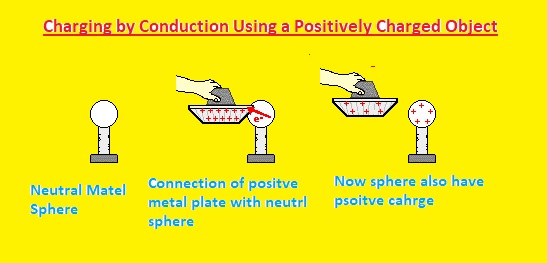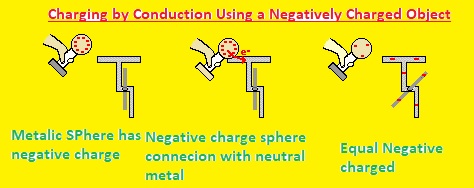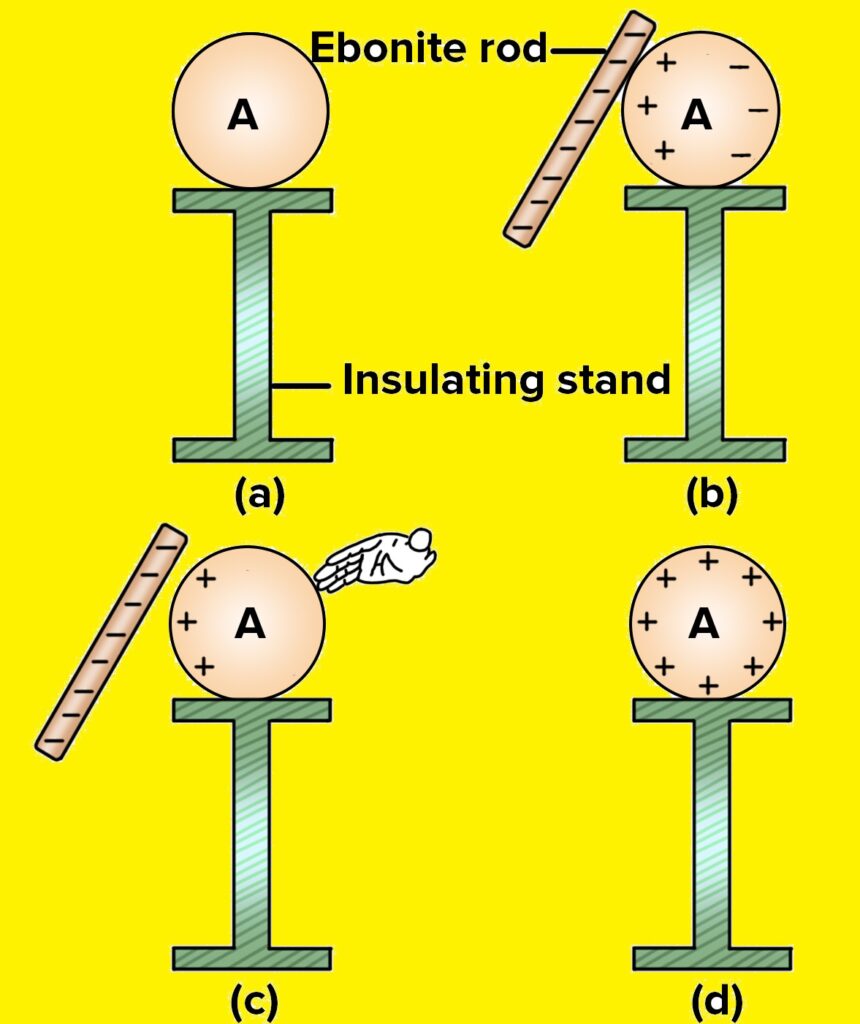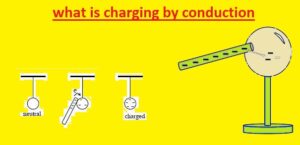 Hello, readers welcome to the new post. In this post, we will discuss What is Charging by Conduction. Charging by conduction is a method used for charging uncharged objects while making content with other charged objects. The negatively or positively charged objects come with uneven charges.
Hello, readers welcome to the new post. In this post, we will discuss What is Charging by Conduction. Charging by conduction is a method used for charging uncharged objects while making content with other charged objects. The negatively or positively charged objects come with uneven charges.
In this post, we will have a detailed look at charging by conduction and other related parameters. Let’s get started with What is Charged by Conduction
What is Charging by Conduction?
- A positively charged aluminum plate is touched with the neutral metal sphere. The neutral metallic sphere get charged as result of connection with the charged aluminum plate.
- If we touch a negatively charged metallic sphere with a plate of neutral needed an electroscope.
- The neutral electroscope becomes charged as a result of contact with the sphere.
- If an uncharged physics student is making contact with a negatively charged Van de Graaff generator. Students will become charged.
- In all these examples you see that we make contact with natural bodies with negative and positive charges and charges shifted to neutral bodies.
- So it is called the charged-by-conduction process since involves the connection of bodies.
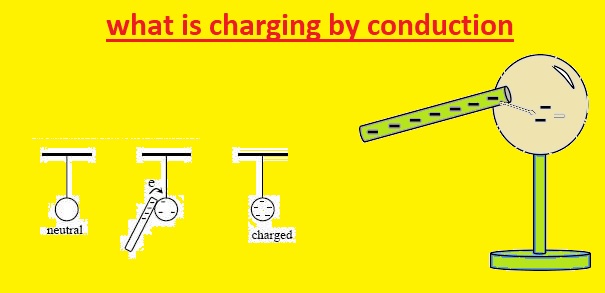
Charging by Conduction Advantages
- Charging by conduction involves touching the charged particles with conductive material. In this process, charges shifted neutral conductor. So this process helps to charge conductors.
Disadvantages of Charging by Conduction
- Proper direction is required for making the connection between two objects.
- it is a hazardous process that needs some safety measures
- So nearby devices can affected if not performed in well way
How Conduction Charging is Used in Everyday Life?
- The larger electrons on the balloon created an imbalance in charge causing the attractive force between ballon and positively charged hair.
- Another example of charging by conduction is when we touch doorknob after walking across a carpet.
What is an Example of Charging by Conduction?
- Charging by conduction is also called sharing by contact. Through the charging conduction process, the charged object must touch the charged electroscope and shift to charges to it.
Law of Conservation of Charge
- The law of conservation of charges explains that electric charge not be created nor destroyed in a closed system, the amount of charge is the same. When anyone changes the charges it is not created but transferred.
How to Charge by Conduction
Charging by Conduction Using a Positively Charged Object
- Here we take an example of a positively charged aluminum plate used for charging a neutral metallic sphere through conduction.
- In below diagram we can see that a positively charged aluminum plate is touched with the neutral metallic sphere.
- The positive plate has an excess of positive charge but has fewer electrons.It can be said that a high number of protons are discontented.
- it will be neutral until negatively charged electrons. But as a proton is connected in the nucleus of an atom, it is not able to left atoms for search electrons.
- It can attract moving electrons itself. If the conductive path is created between a larger number of electrons and excess protons, it can be a chance to make the connection.
- if we touch a positively charged plate with a neutral metallic sphere, many electrons on the metallic sphere move to the charged aluminum plate
- In a result of moving the electrons, the positive charge on the aluminum plate metal plate shifted to the sphere. So positive charge will created on the sphere due to the removal of electrons.
- As the plate already has a positive charge and the sphere now also positive charge.
Charging by Conduction Using a Negatively Charged Object
- ‘Now we have a negative charge sphere and make its connection with a neutral needle electroscope.
- As we know the same charges repel each other. As a negatively charged sphere has a larger number of electrons., those electrons are applying repulsive force on each other and are moving at a distance.
- So if we make contact with a negatively charged sphere with a neutral needle electroscope. In a result, electrons move from the sphere to the electroscope.
- The electroscope. now becomes negatively charged and the sphere already has a negative charge.
- So we can say that the negative charge shifted to a neutral body through the condition process of charging.
Safety Considerations when Charging by Conduction
- During conduction charging it is necessary to follow some safety measures for safe charge transfer. First of all, ensure that the source of energy is off before starting the charging process
- Another is avoiding touching the live wires or objects that are in contact with a live wire.
- Try to use accurate devices like rubber gloves and safety glasses and protect from electric shock
Comparison of Charging by Conduction with Other Charging Methods
Conduction
- It is fast process, and a direction connection is made for charging
- Its main drawback is direct connection is needed
- An example is a phone charging
Induction
- It not need contact for charging and is easy to process
- it is slow process
- Phone charging with the use of a wireless charging pad is an example.
Static
- It charges different objects without the use of direction contact.
- It is a slow process and is used for a limited range.
- Static electricity generated through rubbing balloon on hair
Conduction Vs Induction
Conduction
- It is a phenomenon caused due to current flow due to an electrical field.
- It needed direct contact between charged and uncharged conductors
- Current in both conductors flow at the same time
- It needed a gradient path due to transfer of charges nature.
- It reduces due to charge distribution
Induction
- In this phenomenon curent flow due to changes in the field
- There is no contact needed between charged and uncharged particles
- The induced current is in the reverse direction with the current
- It does not need a gradient path due to the induced type of charges.
- It is constant
Read Also;
- Solar Battery Charger Circuit using 7812
- Solar Battery Charger Circuit
- Battery Charger Circuit Simulation
- Introduction to CN3065 Mini Solar Charger
- What Battery is Equivalent to sr920sw
FAQs
What is the Difference Between Charging by Induction and Charging by Conduction?
The main difference for induction and condition is that Conduction needs direct contact with the conductor. Induction not need direct contact with the conductor.
Is Charging by Conduction Safe?
If accurately performed connection between bodies for charging then it is a safe process.
Can We Use any Material for Charging by Conduction?
Conductive materials just charged through this process.
Can charge by conduction damage electronic devices?
Static electricity creates electric charges on objects, normally resulting of friction of another type of contact. This charge can transferred through conduction to other objects, resulting in damage to electronic instruments or has chance of electrical shock to humans
Is charging by conduction the effective method of charging electronic devices?
yes, it can be, charging by conduction involves touching charged particles to the conductive material. So the charges are shifted from charged to conductor of neutral nature. It is the best method for charging conduction
What is charging by conduction and induction?
The process of charging an uncharged conductor by making electrical contact with a charged body is called charging by conduction. The process of charging an uncharged conductor by taking a charge body close to it not but not touching it known as charging by induction.
What is conduction in electric charges?
The charging by conduction process comes with the touching of charged particles with conductive material. In this process, charges are shifted from the charged material to the conductor.
What is charging by rubbing and charging by induction?
Charing by rubbing or contact and charging by induction are two different techniques in which objects can be charged electrically. Charing through contact comes with physically touching another charged body and charging by induction is not needed.
What do you mean by charging by contact?
The process of giving one body net charge by placing it in connection with another body that is charged is already called charging by contact.
What do you mean by ‘charging by conduction’? What kind of charge does the body acquire?
Charging by conduction is the transferring charge between 2 bodies by contact. When a charged body makes contact with a neutral object, electrons will flow from the charged body to the neutral object until the 2 objects have the same electric potential. The charged object will lose electrons, and the neutral object will get electrons. The charge type that the body gets is based on the charge of the body that it is being contacted with. For instance, if a negatively charged object is made contact with a neutral object, the neutral object will become negatively charged.
In charging by conduction, the charged object
In charging by conduction, the charged bodies lose electrons. This is due to the charged bodies having a higher electric potential than the neutral object. The electrons will pass from the charged body to the neutral object to equalize the electric potentials of the 2 bodies
What is charging by induction example?
What is charging by conduction?
The charging by conduction technique is the process of transferring charge among 2 bodies by connection. When charged bodies make connections with neutral bodies. The charged bodies will lose electrons and neutral bodies will get electrons. The charge type that the body needs is based on a charge of bodies that are connected. Such as if a negatively charged body makes contact with a neutral object, the neutral object will be negatively charged.
Why is it called charging by induction?
Induction charging method where the neutral body is charged without touching another charged body. The charged particle is put close to neutral or uncharged material that is grounded on neutral-charged material.
Is charging by induction positive or negative?
If negatively charged bodies are used for charging bodies through induction, then neutral bodies will need positive charge. If positively charged bodies are used for charging neutral bodies by induction, then neutral bodies will get a negative charge.
What is the conduction of charge?
Conduction of charge is the motion of charge through a conductor. Conductors are materials that help charges to flow easily. Metals are good conductors. When a conductor is in an electric field, the free electrons in the conductor to the electric field direction This motion of electrons is what makes the conduction of charge.
Electric charge is shared between two objects in the process of charging by conduction.
This is correct. When 2 bodies are in contact, electrons will pass from the object with a high electric potential to the object with a low electric potential. This flow of electrons will continue till two bodies have similar electric potential. In the process of charging by conduction, the charge is shared between the 2 bodies

